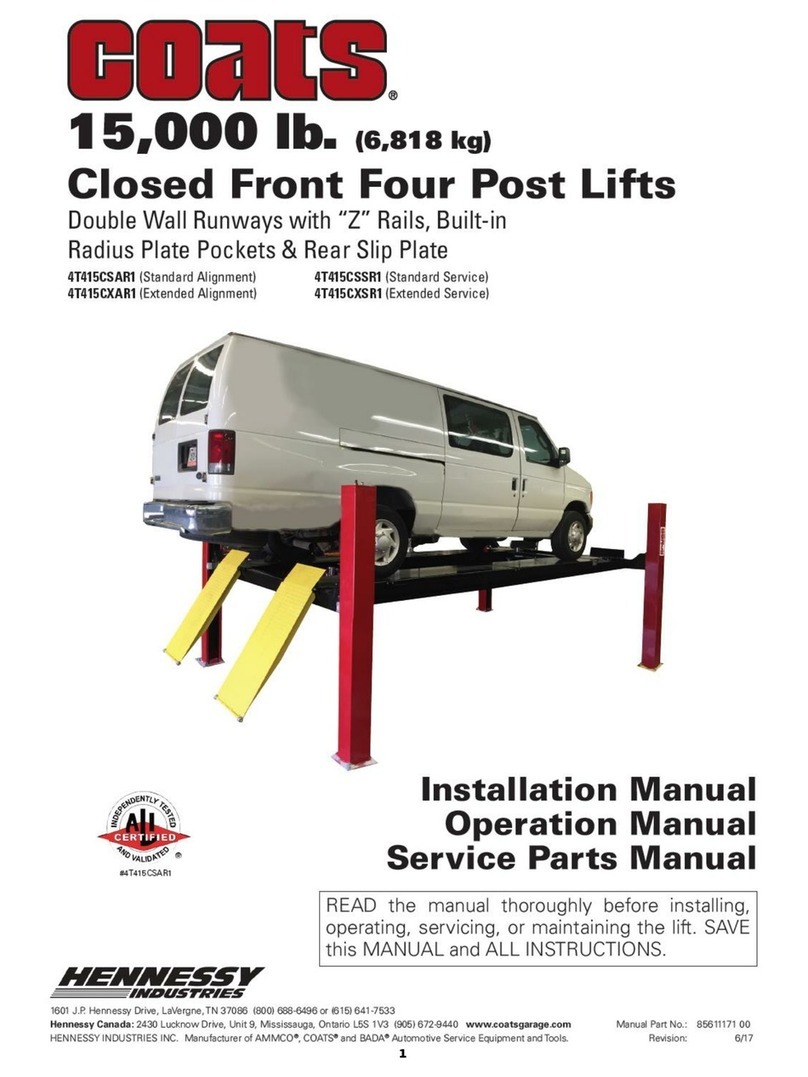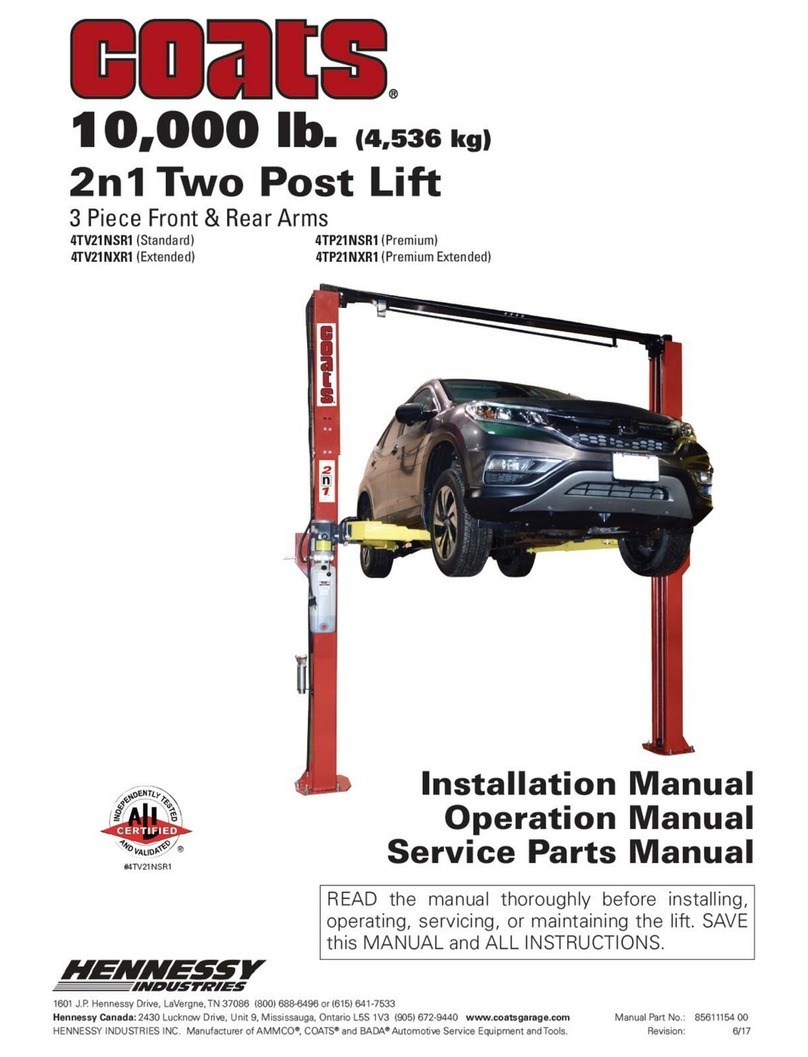Safety Continued
Basic common sense safety precautions should always be followed when installing, operating and
maintaining the lift as a risk of fire, electric shock, or injury may be present.
In addition:
1. Read and follow all safety instructions and decals included with the lift. Read and follow all safety
instructions in this manual. Read and follow the ALI "Lifting It Right" manual (included with the lift).
Always use the "Vehicle Lifting Points" reference guide when lifting a vehicle. Insure all materials
stay up to date(www.autolift.org/ )
2. Only trained and authorized personnel should position a vehicle and operate the lift. Do not allow
customers or bystanders to operate the lift or be in the lift area.
3. Inspect the lift daily. Do not operate if potential problems have been identified or lift malfunctions.
Do not operate if lift has damaged or broken components. Never walk or work under the lift unless
all safety locks are completely engaged.
4. Never overload the lift. The rated capacity decal is located on the powerpack column. The hydraulic
system on this lift is not designed to be a load holding devise. Mechanical safety locks must be
engaged before proceeding under the lift, with vehicle servicing, or system maintenance. Never
override operating controls. This is unsafe and will void the warranty.
5. Before driving a vehicle between the columns, position all arms to insure unobstructed entry. Do not
hit or run over arms as this could damage the lift and/or vehicle.
6. Use all 4 arms to raise a vehicle. Position all lift pads to contact vehicle manufacturer’s
recommended lifting points. Raise lift slowly until all pads contact the vehicle. Check all pads for
complete and secure contact with the vehicle. Check all arm restraints to insure they are engaged
properly. Check that vehicle is stable on the lift. Only after confirming these procedures, raise the
lift to desired working height.
7. Special care must be used when lifting pick-up trucks. Optional truck adapters may be required to
reach manufacturer recommended lifting points. Always use these lifting points. Running boards
and other installed accessories may also require optional adapters. Insure contents of the cargo box
will not affect vehicle balance while on the lift.
8. Important: Removal or installation of heavier parts can change the vehicle's center of gravity on the
lift resulting in a critical load shift. The vehicle may then be unstable. Plan ahead for this possibility
to insure continued safety and refer to the vehicle manufacturer’s service manual for recommended
procedures.
9. Always keep the lift area free of obstructions and debris. Clean up grease and oil spills immediately.
10. Never raise a vehicle with passengers inside. Before lowering a vehicle, check the lift and lift area
and remove all obstructions. Before removing vehicle from the lift or lift area, position arms to the
drive through position and confirm an unobstructed exit.





























